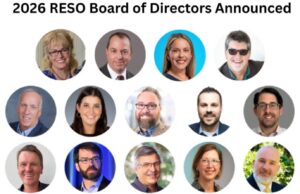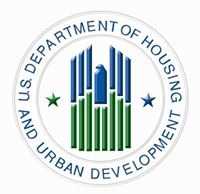EPA funded projects ensure safe drinking water and protect water quality throughout the Pacific Northwest and Alaska
EPA Advances President Trump’s Infrastructure Agenda Through Accelerated Investments in America’s Water Infrastructure
EPA Advances President Trump’s Infrastructure Agenda Through Accelerated Investments in America’s Water Infrastructure
EPA funded projects ensure safe drinking water and protect water quality throughout the Pacific Northwest and Alaska
Washington — (RealEstateRama) — As highlighted in President Trump’s State of the Union address and in support of the President’s Infrastructure Initiative, the U.S. Environmental Protection Agency (EPA) has accelerated investment in the nation’s aging water infrastructure.
chilled and boiling water filters
Whether you’re looking after a large crew, or just your own little tribe, filtered chilled and boiling drinking water is always on tap, ready to go at a moment’s notice.
“EPA is delivering on President Trump’s promise to jump-start critical infrastructure projects that will not only enhance environmental protections but also grow the economy,” said EPA Acting Administrator Andrew Wheeler. “Under President Trump, EPA has issued seven WIFIA loans to help finance over $4 billion in water infrastructure projects that will improve water quality and create up to 6,000 jobs. By clearly defining where federal jurisdiction begins and ends, our new proposed Waters of the U.S. definition will provide states and the private sector the regulatory certainty they need to develop and streamline projects that will modernize our nation’s aging infrastructure.”
Over the past year, EPA has moved President Trump’s infrastructure agenda forward by working to get the financing, tools and resources EPA’s state, local, tribal and other partners need to modernize outdated water infrastructure while improving local water quality, creating jobs and better protecting public health.
“WIFIA and the state revolving funds have proven critical to addressing infrastructure needs in Northwest and Alaska communities where aging local water systems are often stressed by rapid growth,” said EPA Region 10 Administrator Chris Hladick. “In focusing on these fundamental local needs the administration is helping to ensure the health of these communities as they continue to grow.”
Together with the agency’s state, local, tribal and other partners, EPA achieved the following major water infrastructure accomplishments in 2018:
WIFIA
Established by the Water Infrastructure Finance and Innovation Act (WIFIA) of 2014, EPA’s WIFIA program is EPA’s newest water financing program, which provides long-term, low-cost supplemental loans for regionally and nationally significant projects. In 2018, EPA issued seven WIFIA loans totaling nearly $2 billion to help finance over $4 billion for water infrastructure projects and create up to 6,000 jobs. In November 2018, EPA invited 39 additional projects in 16 states and Washington, D.C. to apply for a WIFIA loan. Together, these selected borrowers will receive WIFIA loans totaling approximately $5 billion to help finance over $10 billion in water infrastructure investments and create up to 155,000 jobs.
Two of the 39 projects invited to apply for WIFIA loans are in the Pacific Northwest:
The City of Seattle is applying for approximately $200 million for the Ship Canal Water Quality Project. Once this project is completed, the number and volume of Combined Sewer Overflows into the Lake Washington Ship Canal from the neighborhoods of Ballard, Fremont, Wallingford and north Queen Anne will be dramatically reduced.
The Willamette Water Supply Program project, being undertaken by the City of Hillsboro and Tualatin Valley Water District, is seeking $617 million in WIFIA funding to add an additional 60 MGD of water supply and 30 million gallons of storage capacity for the greater Portland metropolitan area.
State Revolving Funds
The Clean Water and Drinking Water State Revolving Funds (SRFs) play an integral role in EPA’s efforts to help communities replace or upgrade aging or inadequate drinking water and wastewater infrastructure through low-interest loans. Together, in 2018, the SRFs committed $9.6 billion in drinking water and clean water infrastructure loans and refinancing and disbursed $8.8 billion for drinking water and clean water infrastructure. This level of funding was facilitated through EPA’s contribution of $2.2 billion to the state revolving funds in 2018.
Examples in the Pacific Northwest:
The City of Prineville, Ore. took a particularly innovative approach with CWSRF loan funding to design and construct the Crooked River Wetlands Complex. This allowed the community to invest just under $8 million to provide increased wastewater treatment capacity, instead of the $62 million a new treatment plant would have cost. Because the project ended up constructing wetlands, the complex can be used for recreational and educational purposes. EPA recognized the innovation and effectiveness of this project by giving it a 2018 national PISCES Exceptional Project Award.
The City of Bellingham, Wash. used $12 million in SRF loan funding to design and construct a creative solution to a public health problem caused by summertime algal blooms in Lake Whatcom, the city’s drinking water source. Algae fouls the water filters when its sucked into the water intake it, meaning the filters have to be shut down and cleaned, or sometimes replaced. This city piloted the use of dissolved air flotation (DAF), which is more commonly used in the wastewater sector. The pilot was successful and DAF was added to the city’s treatment plant, allowing for longer filter run times and reductions in both organic loading and formation of disinfection byproducts. Region 10 will be recognizing this innovative project with a 2018 DWSRF WATERS Award.
In addition to funding large-scale infrastructure projects, EPA has also taken a leading role in the administration’s initiative to promote greater efficiencies in the infrastructure permitting process. These actions include working to provide a clear and predictable approach to identifying waters that are subject to federal authority through the Department of the Army’s and EPA’s proposed “Waters of the United States” rulemaking, implementation of the administration’s One Federal Decision initiative and through other improvements to the Clean Water Act permitting process. EPA will take these actions by cooperatively working with its state and tribal co-regulators with a goal of streamlining environmental permitting and increasing investments in critical water and other infrastructure projects.
For more information on the President’s Infrastructure Initiative, visit https://www.whitehouse.gov/briefings-statements/building-stronger-america-president-donald-j-trumps-american-infrastructure-initiative/ .
For more information about EPA’s WIFIA program, visit https://www.epa.gov/wifia
For more information on the Clean Water State Revolving Fund, visit https://www.epa.gov/cwsrf
For more information on the Drinking Water State Revolving Fund, visit https://www.epa.gov/drinkingwatersrf













